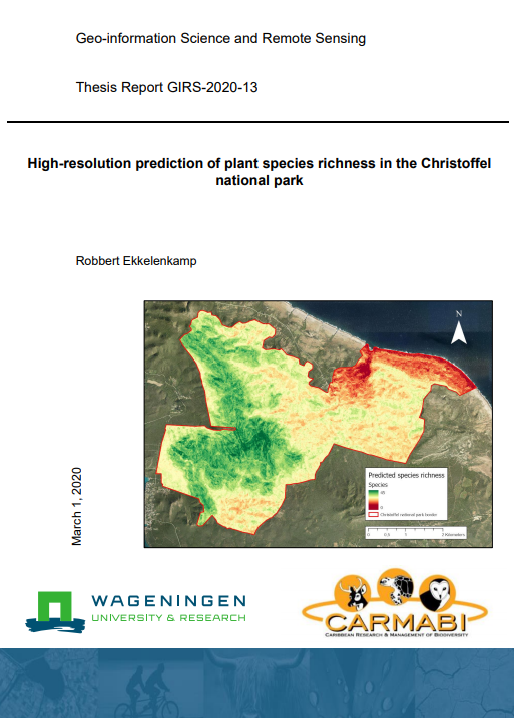High-resolution prediction of plant species richness in the Christoffel national park
Submitted by Shassy Cahyani on Thu, 02/25/2021 - 17:33Previous attempts at mapping the vegetation of the Christoffel national park on the island of Curaçao were done in times of intense grazing pressure and are likely not valid anymore after the removal of goats from the park because grazers have a significant effect on the native vegetation of the island ecosystems. In 2018, a 2-year fieldwork campaign was started to revisit the sampling points of Bokkestijn & Slijkhuis (1987) with the aim of remapping the vegetation communities and studying the change that occurred in the last decades. This thesis aims to assess the changes in vegetation distribution and use the newly acquired data to predict plant species richness across the entire national park at a high resolution using a macroecological modeling strategy. A trend of secondary vegetation succession has been found since 1985, with an increase in the coverage of trees, orchids, and bromeliads and a decrease in grasses and herbs. The large-scale recovery of the native vegetation is found especially on the coast and midland of the park, while the Christoffel mountain and its surroundings have remained relatively stable. An aerial photograph interpretation of the vegetation communities found significant dependence of vegetation communities on elevation and slope aspects. High-resolution plant species richness prediction models were built and it was found that elevation and slope aspects have the most predictive weight. Little research has been done on high-resolution species richness prediction models; however, it is shown that these models can be utilized to characterize the variables influencing species distribution at high resolution and local scale, with comparable accuracy to coarser prediction models.

